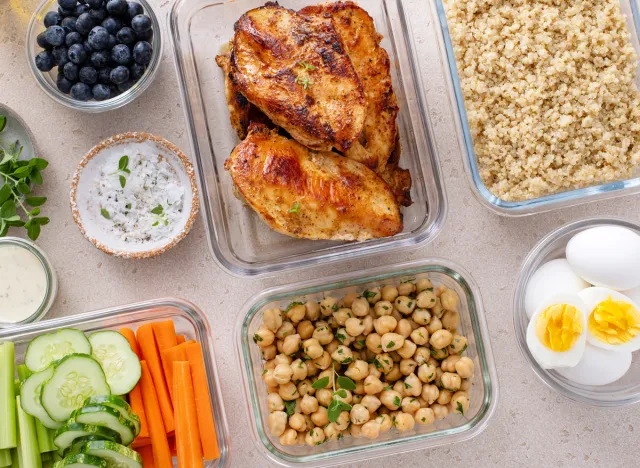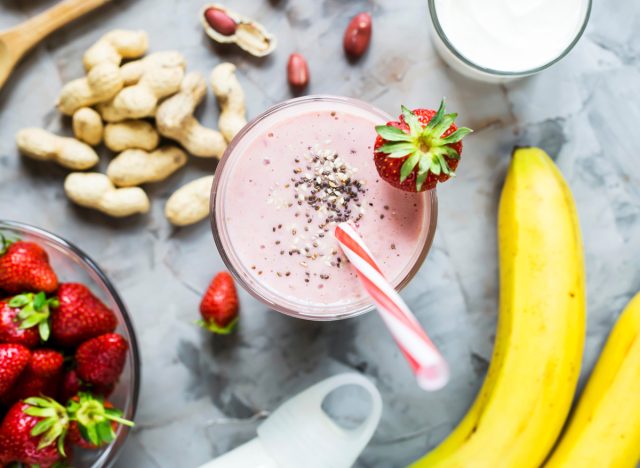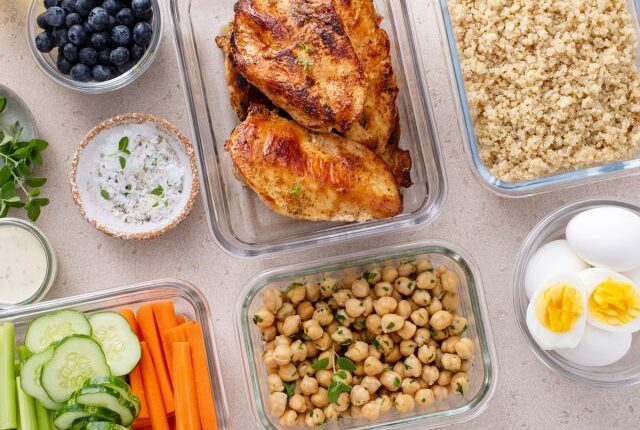Protein is quite popular these days, appearing in various forms such as protein-based pastas, breads, and yogurts, as well as the more traditional powders, bars, and shakes. This trend is justified as protein plays a crucial role in keeping you satiated for longer periods, which can aid in achieving weight loss objectives and in maintaining and developing lean muscle mass. The question is, how much protein is actually necessary?
In this article, we’ll delve into this topic. I’ll explain how to determine your specific protein requirements and assess whether consuming 150 grams of protein daily is suitable for you. Moreover, I’ll guide you in creating a well-rounded meal plan that provides around 100 to 150 grams of protein. Remember, feel free to customize your meals using the tips in this guide to align with your individual nutritional needs. Keep in mind, nutrition is not a one-size-fits-all concept!
How Much Protein Do You Need Per Day & Is 150 Grams Right for You?

Protein requirements vary among individuals and are influenced by various factors including age, gender, activity levels, and health conditions. The recommended protein intake guidelines are established based on the Recommended Dietary Allowance (RDA). The RDA sets the minimum protein intake required to prevent muscle loss for a healthy individual. As per the RDA, the protein requirement is about 0.8 grams per kilogram of body weight. For instance, an individual weighing 165 pounds would need roughly 60 grams of protein per day based on this guideline.
However, keep in mind the RDA doesn’t factor in exercise or specific health goals, be it building more muscle or losing fat. With this in mind, healthcare professionals argue (myself included) that most regular exercisers (meaning those people who meet or exceed the recommended physical activity guidelines of 150-minutes of moderate-intensity activity or 75-minutes of vigorous-intensity activity) need more protein. For example, a range closer to 1.4 to 2 grams per kilogram of body weight for people who exercise at least five to six days a week, including strength training, seems to be a more accurate recommendation.
To put this into perspective, someone weighing roughly 235-pounds who works out three to five days a week at a moderate intensity may need about 150 grams of protein based on the 1.4 grams per kilogram calculation. On the other hand, someone training vigorously on a routine basis who weighs in at 165-pounds may need that same 150 grams of protein based on a 2 grams per kilogram protein calculation.
As you can see, depending on your body weight and personal health goals, your protein needs may be higher, and even closer to that 150 gram mark. However, more isn’t necessarily better when it comes to protein, especially depending on how much you’re packing in per meal. Let’s explore this a bit more.
How Much Protein Should You Eat Per Meal?
Just because protein typically bodes well for health goals doesn’t mean you should overdo it during your meals. Why? Because just like the other macronutrients, excess protein intake that can’t be used by the body ends up getting stored just as any other calorie would… body fat. Ultimately, this results in weight gain.
Keep in mind your body can only metabolize about 0.4 to 0.55 grams per kilogram per eating occasion. This nets out to around 30 to 41.25 grams of protein max for someone who weighs 165-pounds. Depending on your personal body weight, if you’re enjoying a meal with 50 grams of protein, it’s not necessarily benefiting you as much as you may think.
Instead of aiming for the highest protein option at each meal, focus on building your snacks and meals with your personal protein needs in mind. For someone aiming for that 150 gram mark, breaking your protein intake up into three main meals with 30 to 40 grams, accompanied by two to three snacks with a range of 5 to 20 grams of protein, will help you achieve this goal.
You may need to get a little savvy with how you balance your protein, but don’t worry. That’s where I come in! I’ll show you options below for each eating occasion to make it easy on you, meaning if you have a higher-protein breakfast due to an early morning sweat sesh, you may enjoy a lower protein bedtime snack. Finding the balance while meeting your protein needs will help set you up for success to meet your health goals, not derail them.
The Best High-Protein Foods

Choosing foods that pack protein with minimal other ingredients is a great way to build your meals around. While protein supplements, like bars and shakes, have their place when time is tight, they shouldn’t be what you rely on to meet your protein goals.
In fact, there are a plethora of options available at your market (and even in your kitchen I’m willing to bet) that pack the staying power of protein while also delivering other important nutrients. For example, dietary fiber, potassium, calcium and vitamin D, are nutrients most Americans aren’t eating enough of. Pulses and legumes, like canned beans and lentils, are great plant-protein options that pack fiber, while refrigerated dairy, like cow’s milk or fortified soymilk, are wonderful additions to increasing vitamin D, calcium and potassium in the diet.
These may not be your top protein choices that come to mind when you hear protein packed, but believe me, they’re right up there with some other contenders line lean meats. As you stock up on high-protein foods, keep these dietitian favorites top of mind:
- Greek yogurt
- Cottage cheese
- Chicken breast
- Turkey
- Tuna
- Sardines
- Salmon
- Tofu
- Edamame
- Tempeh
- Canned beans
- Lentils
- Chia seeds
- Pumpkin seeds
150 Grams of Protein Per Day Meal Plan Examples
Whether your protein needs are close to 150 grams or lower, use these sample meal ideas to get your creative culinary side flowing! Keep in mind, depending on the time you workout, you’ll want to adjust your protein intakes to make sure you’re covered in the recovery window (usually within the first 30 minutes after your finish) to reap the benefits for muscle repair and synthesis.
Recommendations suggest aiming for 0.2 to 0.5 grams of protein per kilogram of body weight for workout recovery, meaning someone weighing 165-pounds should aim to have 15 to 37.5 grams per kilogram in this period. Note, you may need to opt for a meal post-workout and save your snack for later on. You can always swap around your meals and snacks to ensure your protein needs are being met in the right window to help achieve your goals.
Let’s take a look at some powerful protein pairings that work morning, noon, and night!
Breakfast (30 to 40g protein)






